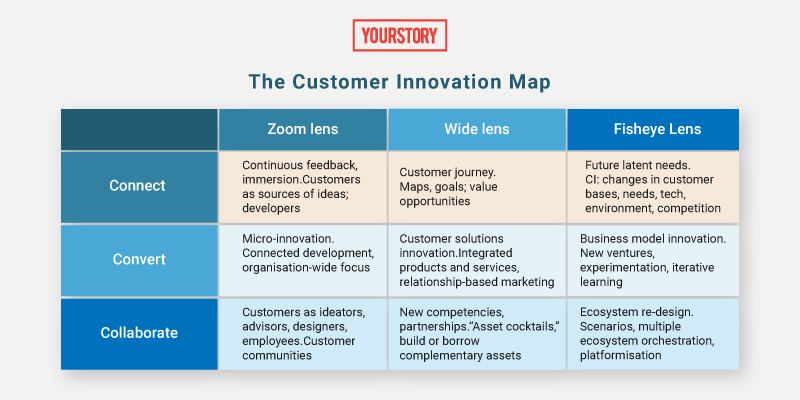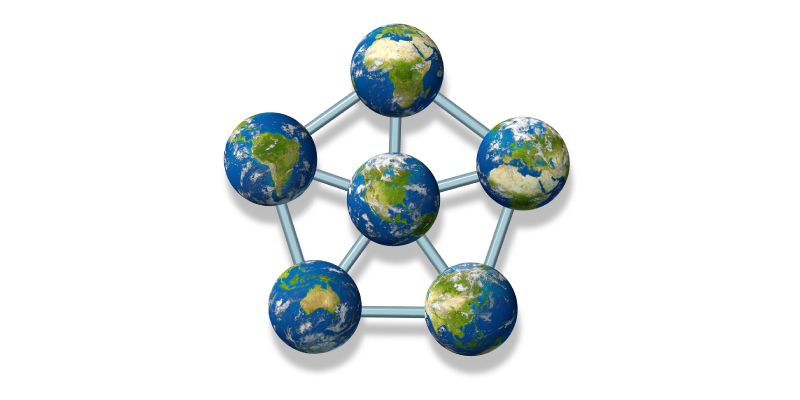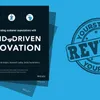Launched in 2012, YourStory's Book Review section features over 280 titles on creativity, innovation, entrepreneurship, and digital transformation. See also our related columns The Turning Point, Techie Tuesdays, and Storybites.
A wealth of frameworks, tips, and examples of customer-led business success is featured in the second edition of the compelling book, Customer Innovation: Delivering a Customer-Led Strategy for Sustainable Growth, by Marion Debruyne and Koen Tackx.
The book presents a three-by-three matrix of connect, convert, and collaborate with customers, across different levels of detail (zoom, wide and fisheye lenses). The material is well researched and presented in an engaging manner, backed with over 40 case studies from diverse industries.
Marion Debruyne is Dean of Vlerick Business School, Belgium, where Koen Tackx is a professor of strategic marketing.
Research capabilities and first-mover advantage are no longer sufficient for business success in a fast-changing global economy. “What is needed is an extreme customer orientation, so that your innovation is inspired and guided by where the market is going,” the authors begin.
Here are my key takeaways from this compelling 250-page book, summarised as well in the table below. See also my reviews of the related books The Invincible Company, Dual Transformation, The Seven Principles of Complete Co-creation, Frugal Innovation, Cross-Industry Innovation, Innovator’s DNA, and Machine, Platform, Crowd.

Foundations: customer orientation
Business success needs three essential capabilities: connect with the customer to assess needs; convert these insights into superior solutions; and collaborate with other firms to deliver new value. This should be refined with three perspectives or lenses: zoom (existing customers, current products), wide (entire customer journey), and fisheye (changes in the periphery).
Together, these factors yield a 3X3 matrix to map a company’s performance in continuous customer innovation – from incremental to breakthrough innovation, from an internal focus to an ecosystem strategy.
Proactive customer innovation yields more sustainable advantage than innovation only in products, operations and markets. This calls for relentless listening to customers and building new capacities internally and via external partnerships, the authors emphasise.
All three capabilities are needed together: focus only on connection will make the company a slave to the customer and miss emerging markets; not converting insights into action will be a waste of intelligence; and focusing only on radical innovation will miss the benefits of incremental innovation.
Co-creation with customers helps increase likelihood of product success, ensure buy-in, spur referrals, and provide authentic credible testimonials. Barriers to a customer-centric view include “blind love” for current products, and skepticism that customers have value to add, the authors caution.

I. Zoom lens: current products
Continuous feedback loops and immersion in customer lives helps understand their needs better. Customers should also be harnessed as sources of ideas and even developers of their own solutions, the authors advise.
Periodic surveys and continuous social media communication help a company stay connected to its customers. Ethnographic approaches to observation yield deeper insights into unarticulated needs and emotional benefits. Customer communities, smart devices, and idea-sharing platforms are useful approaches in this regard.
Examples include Zappos’ call centres, Intel’s digital anthropologists, Coca-Cola’s Freestyle dispensers, Granville’s bicycle configurators, Televic’s simulated patient rooms, MyStarbucks idea platform, and Maker Faires.
These insights can then be converted into incremental innovations through daily improvements and small-step changes. Care should be taken to avoid feature bloat and meaningless differentiation, the authors caution.
Instead, connected development should be adopted in an open and iterative manner, and customers should be shown that their suggestions matter, are listened to, and acted upon. The entire organisation will need to be engaged in such responsibilities.
Examples include Lego Ideas, Asos Style Match, and Chateauform’s event surveys, annual idea fairs, and customer advisory board.
The next step of maturity in this perspective is to collaborate with customers as advocates, guides, advisors, idea screeners, designers, influencers, and even as employees.
“Start seeing customers as key collaborators. Build a structured collaboration with customers by giving them an active role,” the authors advise. Customers should be treated as more than just buyers. Separately, enterprise or internal crowdfunding can spur ideas from within the organisation.
Examples include Zipcar’s customer communities, IBM Innovation Jams, Local Motor’s customer created cars, and Salesforce.com’s annual Dreamforce event and Most Valuable Player customer ambassador programme.
II. Wide lens: customer journeys and goals
The wide lens perspective focuses not just on current products and their functional benefits, but on expanded opportunities by addressing the entire customer journey, needs, and aspirations.
Examples include Airnbnb storyboarding, Engie energy calculation tool for switching costs, BMW’s five-year guarantee, OTIS predictive maintenance, Van de Welde 3D digital mirrors for size estimates, and Zagat’s restaurant ratings.
Other connect examples are Orica’s explosives estimates, Dow Corning Xiameter’s targeting of the price-seeker segment, Spotify’s music discovery, PatientsLikeMe community, and the Disneyland journey where excitement begins with ticket purchase even before the park visit.
These insights can be further converted into business models for offering integrated solutions, beyond products and services. The focus shifts from transactions to customer relationships, but calls for acquiring new competencies in segmentation and pricing, the authors explain.
Examples include Betafence security systems, Amazon Kindle, Kiehl’s subscription cosmetics, Tide’s drive-through drycleaning, WeWork co-working spaces, and the product-to-service transitions of IBM. GE, and Rolls-Royce.
The final maturity stage in this evolution is collaborating along the entire value chain. An “asset cocktail” should be created with partners, or by acquisition, the authors evocatively explain.
Examples here include Barry Callebaut’s cocoa bean certifications for fair trade, Carglass customer reports for insurance brokers, Ahold Delhaize’s local products retail, MyJohnDeere connected big data platform, the Netflix combination of large catalogue and recommendation engine, and smartphone app platforms.

III. Fisheye lens: emerging frontiers
In addition to customer journeys of today, companies need to cultivate peripheral vision and spot weak or distant signals in the environment. It is important to focus not just on the valuable customers of today, but on emerging segments and latent needs, the authors emphasise.
Roadblocks here include confirmation bias with current customers, mental models of the dominant logic, the curse of prior knowledge, risk aversion, and even the ‘boiling frog’ trap. Tools like active scanning, scenario planning, reverse mentoring, and probe-and-learn experiments can help here.
Connection examples include Airbnb’s spotting of the shared stay market, JustPark’s crowdfunding campaign, Nestle shielding and spinning of Nespresso, and the rise of low-cost airlines.
Converting these insights into business advantage calls for business model innovation through an exploratory mindset and strategic experiments. New ventures can be spun off, but should benefit from the parent’s assets. Obstacles to overcome are fear of cannibalisation, inertia, sunken cost fallacy, resource lockage, turf battles, scepticism, and even self-sabotage.
Successful examples here include the rise of Salesforce.com, Amazon’s wave of experiments, Disney’s business expansion, and Netflix’s business models of DVD rentals, streaming, and content creation.
Nimble players with value-added products such as Starbucks and Chobani have outflanked commodity dairy milk producers. The responses of incumbents like Kodak and Blockbuster to disruptors was too little and too late, the authors observe.
The final stage of fisheye lens excellence is collaboration via adaptable ecosystems. Key success factors are nimble orchestration of ecosystems by finding complementary capabilities, resources and knowledge – from suppliers, partners, and even competitors.
Examples include Janssen Pharmaceuticals’ Venture and Incubation Centre to attract entrepreneurs, and focus on patient-centric disease management systems instead of just product pipelines. An incubated project was the Healseeker computer game for ADHD patients. (See also YourStory’s Startup Hatch series of corporate accelerator and incubator profiles.)
Other ecosystem examples are the Cisco Hyper Innovation Living Labs (CHILLs) and the YardClub construction marketplace (acquired by Caterpillar). Managing ecosystems can be tricky, as IBM found early in the PC business when it ended up giving power away to Microsoft and Intel.
The road ahead
In sum, companies need to combine customer innovation perspectives from all three lenses – zoom, wide, and fisheye. They need to defend the current market position and add value through integration skills – while also placing selected bets on the future and building ecosystem mastery.
“The ability to innovate your company around the customer is a constant source of competitive advantage. When it is embedded into the culture and processes, it becomes the driving force for any organisation to survive and thrive,” the authors sign off.
YourStory has also published the pocketbook ‘Proverbs and Quotes for Entrepreneurs: A World of Inspiration for Startups’ as a creative and motivational guide for innovators (downloadable as apps here: Apple, Android).
Edited by Teja Lele Desai
Link : https://yourstory.com/2020/12/continous-customer-innovation
Author :- Madanmohan Rao ( )
December 11, 2020 at 10:10AM
YourStory


